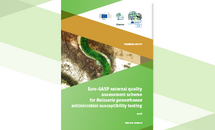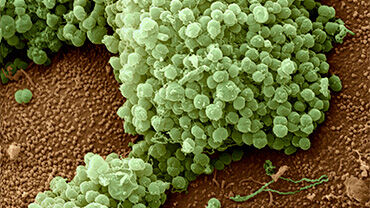Euro-GASP external quality assessment scheme for Neisseria gonorrhoeae antimicrobial susceptibility testing - 2019
External quality assessment (EQA) is an essential part of any laboratory-based surveillance system, allowing for the monitoring of performance and comparability of results from participating laboratories, identification of potential issues and deployment of resources and training where necessary.
Executive summary
Introduction
External quality assessment (EQA) is an essential part of any laboratory-based surveillance system, allowing for the monitoring of performance and comparability of results from participating laboratories, identification of potential issues and deployment of resources and training where necessary. An EQA scheme for antimicrobial susceptibility testing in Neisseria gonorrhoeae has been available to laboratories participating in ECDC’s European Sexually Transmitted Infections (STI) surveillance network since 2010. This EQA scheme has so far shown high levels of inter-laboratory comparability in the presence of differing methodologies.
Materials and methods
The EQA specimen panel of 10 gonococcal isolates was selected by Public Health England (PHE, now UK Health Security Agency (UKHSA)) and distributed by the United Kingdom National External Quality Assessment Service (UK NEQAS). Of the 10 gonococcal isolates provided, one strain was in triplicate and two strains were in duplicate to test intralaboratory concordance. The remaining isolates were all provided singularly, meaning that the N. gonorrhoeae antimicrobial susceptibility EQA panel comprised of six different strains in total. The isolates were representative of a range of different antimicrobial susceptibility profiles and consisted of the four WHO reference strains, WHO G, K, N and P, and two clinical isolates obtained in the UK in 2018 and 2019. Participating laboratories were requested to test the EQA panel using local methodology (i.e. MIC gradient strip test, agar dilution, or disc diffusion) and relevant international breakpoints (i.e. EUCAST, CLSI, etc.) against a range of antimicrobial agents. Results were submitted directly to UK NEQAS, who issued individual laboratory reports. The results were then supplied to PHE, who decoded and analysed the results based on the categories of susceptibility assigned. Susceptibility category concordance (categorical agreement) was assessed using the consensus category (most often reported category) of susceptibility for each tested strain. MIC concordance was assessed by examining MIC results within one (essential agreement) and two doubling dilutions of the modal MIC. Intralaboratory concordance was examined using the triplicate and the two duplicate strains.
Results
In July 2019, 28 laboratories in 27 participating countries received 10 gonococcal isolates for antimicrobial susceptibility testing. All laboratories returned EQA results to UK NEQAS. Most laboratories used MIC gradient strip tests and all used EUCAST breakpoints. The highest level of categorical agreement (other than production of betalactamase; 100%) was seen with spectinomycin (99.7%) and ceftriaxone (99.1%), while the lowest was seen with ciprofloxacin (91.1%). Compared to the previous distribution, the largest increase for categorical agreement was observed for azithromycin (92.5% in 2019, 77.6% in 2018) and the largest decrease for ciprofloxacin (91.1% in 2019, 98.1% in 2018).
Overall, 94.7% and 99.2% of the reported minimum inhibitory concentrations (MICs) were within one (essential agreement) and two doubling dilutions of the modal MIC, respectively demonstrating essential agreement has remained consistent after the increase observed in 2018 (95.2% in 2018, 87.7% in 2017). No relevant changes in the essential agreement for any one antimicrobial were observed between QA18 and QA19. Of the 28 laboratories, 22 (79%) reached an intralaboratory MIC concordance percentage score of 95% or higher with six laboratories obtaining a score of 100%.
Discussion and conclusion
There has been further harmonisation of susceptibility testing methodologies and breakpoints used by participating laboratories; most laboratories used MIC gradient strip tests and all applied EUCAST breakpoints for interpretation of MIC results. Overall, the laboratories participating in the EQA scheme QA19 performed well and showed good levels of competency in testing N. gonorrhoeae isolates of unknown phenotype. Categorical agreement increased in this distribution when compared with 2018, especially for azithromycin. The exception was ciprofloxacin, where a slight decrease was seen. The inter- and intralaboratory concordance was high in most cases, demonstrating comparability between different testing methodologies and allowing confidence in decentralised testing for surveillance purposes. Most susceptibility category discrepancies were attributable to strains with MICs on or close to a breakpoint, which highlights the need to consider the actual MIC as well as susceptibility category when interpreting susceptibility results. Analysis of the individual results submitted by the participating laboratories highlighted one centre in need of further guidance to help bring them into line with the European Gonococcal Antimicrobial Surveillance Programme (Euro-GASP) recommended target of 95% of MICs within two doubling dilutions of the modal MICs and beta-lactamase assessment.






